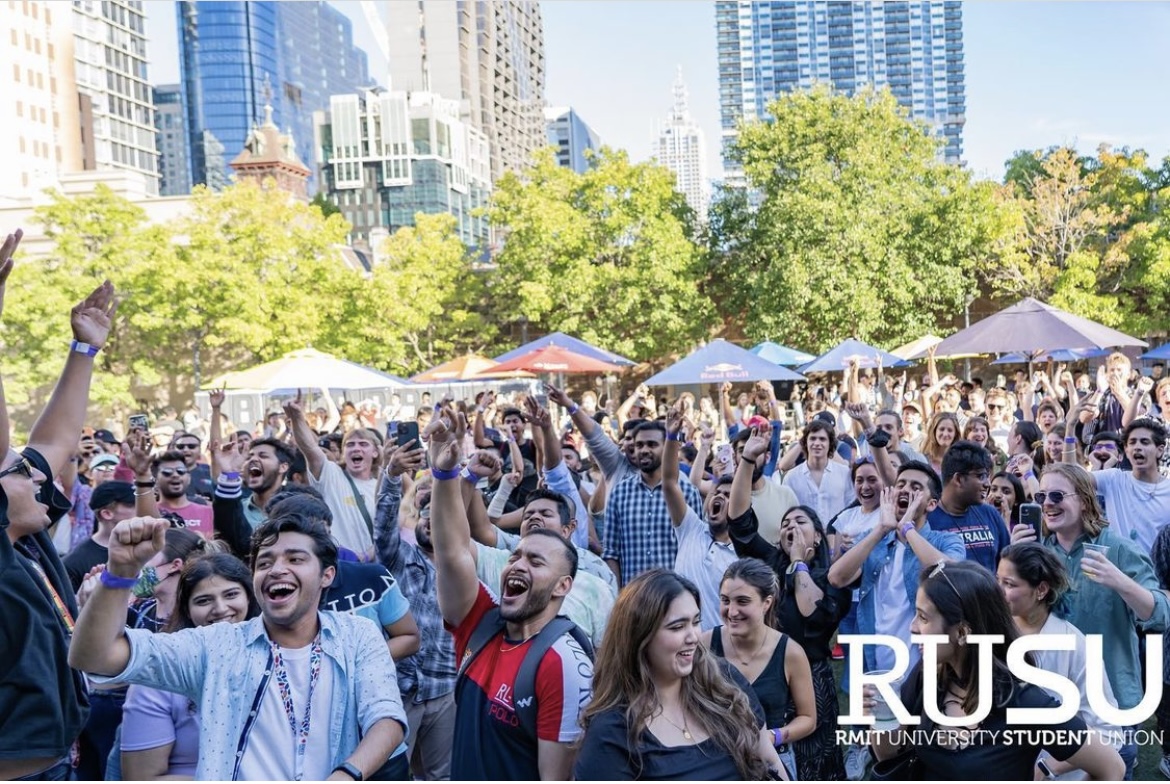Hi everyone, I’m Sheldon, the RMIT University Student Union (RUSU) General Secretary for 2022. On Thursday the 3rd of March, RUSU ran its Welcome Bash. This is the Union’s flagship member’s event for the year which has been on hiatus due to the COVID-19 pandemic. It was a fun night with free drinks, great DJs and with nearly 1000 students attending. In this article, I will briefly cover some of the background work that goes into running an event of this scale.
- Assemble your team
The first step of any project is to assemble your team. This should include people with a broad range of skills who have experience in all aspects of the event. This should include people with experience in events coordination, AV tech support, operations, finance and communications.
- Timeline
The next most important thing when planning an event is your timeline. Is it realistic to plan a 1000-person event in 2 weeks? Possibly. But are you going to pack it out? Probably not. For Welcome Bash, we started planning in mid-January which gave us a 6-week turnaround. I must admit that this is quite a tight timeline, but we are good at operating fast here at RUSU.
When you start working on your timeline, important items to consider are: When do my contractors need to be confirmed? How long do I need for ticket sales and promo? When do I need to confirm my main act by? When do I need a staffing plan complete? How long do I need for liquor license approval?
- Set your budget
Your budget will determine a lot about what you can offer and how the event will run. For the Welcome Bash, which was free entry for all RUSU members, we had a budget of $40,000. Not all organizations will receive a grant for specific events or will have previous plans to run from. You will need to start an expense list with the most essential fixed costs as a priority and more discretionary costs lower on the list.
Infrastructure costs:
– AV
– Staging
– Lighting –
– Portaloos
– Bins
– Bar Hire
– Cleaning
– Seating
Staffing costs:
– Stand-by Paramedics
– Security
– Causal events staff
– Welcome to Country
Flexible costs:
– food and drinks
– Main artist
– Support acts
– Photographer
– Decorations
What was the Welcome Bash’s largest expense? AV/ staging hire ($12,000) followed by Entertainment ($8,000).
- Location
Location not only sets the scene for your event but can also be a contributor to the cost. Is there a venue hire fee? Is AV set-up included or will you have to hire it externally? At RMIT, we were lucky to have access to the Alumni Courtyard – a beautiful old prison courtyard in the Melbourne CBD – for free. The downside of this is we had to build everything from scratch. This did have additional costs compared to hiring a nightclub, but for RUSU, holding this event on campus was invaluable.
- Start contacting suppliers
Once you have your budget and location, it’s time to start getting quotes. This is where it’s great to have someone on your team who has worked in the music and events space before as they will already have relationships with some of these suppliers. Make sure you are getting multiple quotes for your larger items and once you have confirmed your bigger ticket items, start locking them in.
- Promotion
Communications and marketing are an important component of any event and often the part that is overlooked by first-time organisers. There is no point putting in hundreds of hours of work if no one shows up. If you are selling tickets then there is the added risk of not selling enough tickets to cover your expenses.
Don’t just assume that if you build it people will come; this is a fallacy. From personal experience, you need to drag every single person to an event and get them to bring 5 friends. For a 1000+ person event, give yourself at least 4 weeks to promote the event. This should include both Facebook and Instagram advertising as well as word of mouth – it’s more powerful than you would expect.
- Events plan
Organisation, organisation, organisation!
I cannot stress this enough, you will save yourself a lot of time and headaches with a good events plan. When I began my role as General Secretary, I knew this would be one of the most important steps in achieving our goals this year.
For the activities and events department this year, we set up a joint SharePoint page as a central platform to access all events information. Important documents for this to contain include:
– Master list – delegation and status of responsibilities
– Run Sheet – when are your suppliers bumping in and out? Who is managing each part on the day?
– Event Budget
– Supplier Contact list
– Security plan
– Covid Safe plan
- Pre-brief
While you and the events team may know every single detail on the day, it is still important to brief all of your staff the morning of the event so that they know their roles and responsibility. This will save you a lot of stress when things get hectic later in the night.
- Enjoy the event
If everything was well-planned and goes smoothly on the day (spoiler: it rarely does), this is when you get to sit back and watch your attendees enjoy themselves. Relax if you can and have a drink … unless you were the licensee like me.
Good luck in running your events, and looking forward to seeing you at the next RUSU party
Written by Sheldon Gait – General Secretary



